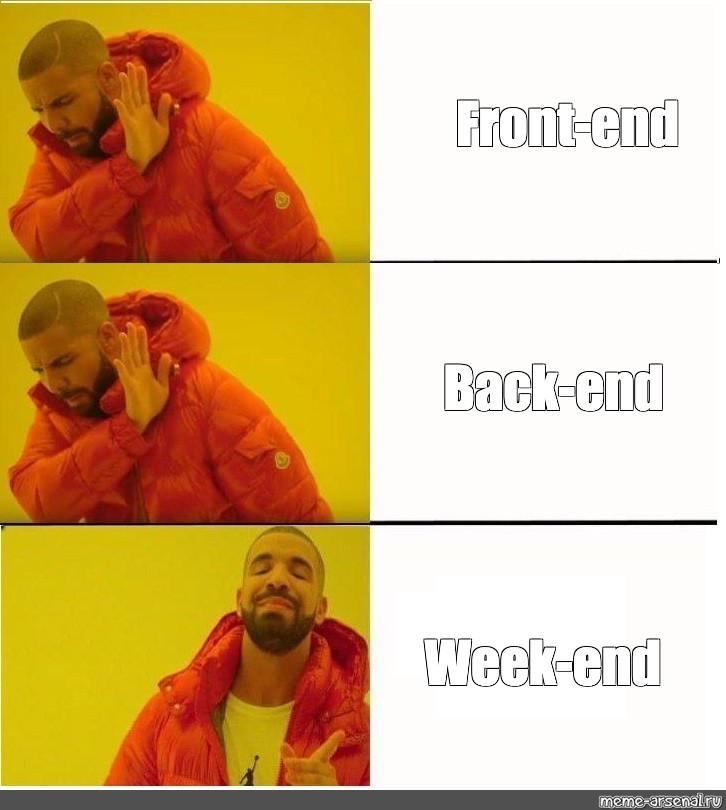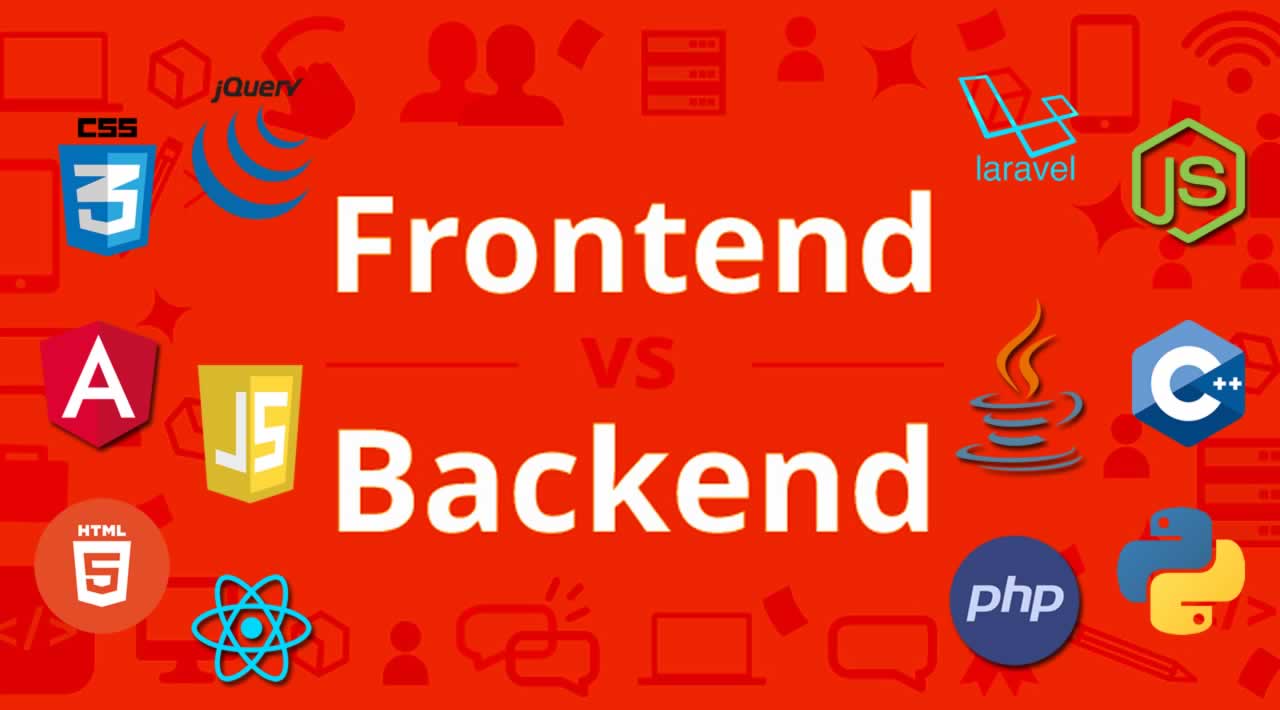FrontEnd Developers vs. BackEnd Developers vs. FullStack Developers
FrontEnd and BackEnd are two most popular terms used in web development. These terms are very crucial for web development but are quite different from each other. Each side needs to communicate and operate effectively with the other as a single unit to improve the website’s functionality.
When it comes to developers, there are typically two groups to choose from FrontEnd developers and BackEnd developers or Full-Stack Developer. In this post, we’re going to look at the differences of each in terms of description, skills, programming languages, and earnings to help you in your decision. Should You Be a Back-End, Front-End or Full-Stack Developer?
FrontEnd vs. BackEnd - Developers
FrontEnd Development:
The part of a website that user interacts with directly is termed as front end. It is also referred to as the ‘client side’ of the application. It includes everything that users experience directly: text colors and styles, images, graphs and tables, buttons, colors, and navigation menu. HTML, CSS, and Javascript are the languages used for Front End development. The structure, design, behavior, and content of everything seen on browser screen when websites, web applications, or mobile apps are opened up, is implemented by front End developers. Responsiveness and performance are two main objectives of the front End. The developer must ensure that the site is responsive i.e. it appears correctly on devices of all sizes no part of the website should behave abnormally irrespective of the size of the screen.
BackEnd Development:
Backend is server side of the website. It stores and arranges data, and also makes sure everything on the client-side of the website works fine. It is the part of the website that you cannot see and interact with. It is the portion of software that does not come in direct contact with the users. The parts and characteristics developed by backend designers are indirectly accessed by users through a front-end application. Activities, like writing APIs, creating libraries, and working with system components without user interfaces or even systems of scientific programming, are also included in the backend.
- Frontend developers build how a website looks.
- Backend developers build how a website works
Let’s say that you wanted to build a WordPress website for your business. The frontend developer would create the theme: the images, style, and presentation. While the backend developer may work on managing the database, as well as the site’s users, security, and site performance issues.


FrontEnd vs. BackEnd - Programming Languages
FrontEnd Languages:
The front end portion is built by using some languages which are discussed below:
- HTML: HTML stands for Hyper Text Markup Language. It is used to design the front end portion of web pages using markup language. HTML is the combination of Hypertext and Markup language. Hypertext defines the link between the web pages. The markup language is used to define the text documentation within tag which defines the structure of web pages.
- CSS: Cascading Style Sheets fondly referred to as CSS is a simply designed language intended to simplify the process of making web pages presentable. CSS allows you to apply styles to web pages. More importantly, CSS enables you to do this independent of the HTML that makes up each web page.
- JavaScript: JavaScript is a famous scripting language used to create the magic on the sites to make the site interactive for the user. It is used to enhancing the functionality of a website to running cool games and web-based software.
BackEnd Languages:
The back end portion is built by using some languages which are discussed below:
- PHP: PHP is a server-side scripting language designed specifically for web development. Since PHP code executed on the server side so it is called server-side scripting language.
- C++: It is a general purpose programming language and widely used now a days for competitive programming. It is also used as backend language.
- Java: Java is one of the most popular and widely used programming language and platform. It is highly scalable. Java components are easily available.
- **Python:**Python is a programming language that lets you work quickly and integrate systems more efficiently.
- JavaScript: Javascript can be used as both (front end and back end) programming languages.
- Node.js: Node.js is an open source and cross-platform runtime environment for executing JavaScript code outside of a browser. You need to remember that NodeJS is not a framework and it’s not a programming language. Most of the people are confused and understand it’s a framework or a programming language. We often use Node.js for building back-end services like APIs like Web App or Mobile App. It’s used in production by large companies such as Paypal, Uber, Netflix, Wallmart and so on.
FrontEnd vs. BackEnd - Frameworks and Libraries:
FrontEnd Frameworks and Libraries:
- AngularJS: AngularJs is a JavaScript open source front-end framework that is mainly used to develop single page web applications(SPAs). It is a continuously growing and expanding framework which provides better ways for developing web applications. It changes the static HTML to dynamic HTML. It is an open source project which can be freely used and changed by anyone. It extends HTML attributes with Directives, and data is bound with HTML.
- React.js: React is a declarative, efficient, and flexible JavaScript library for building user interfaces. ReactJS is an open-source, component-based front end library responsible only for the view layer of the application. It is maintained by Facebook.
Bootstrap: Bootstrap is a free and open-source tool collection for creating responsive websites and web applications. It is the most popular HTML, CSS, and JavaScript framework for developing responsive, mobile-first web sites. - jQuery: jQuery is an open source JavaScript library that simplifies the interactions between an HTML/CSS document, or more precisely the Document Object Model (DOM), and JavaScript. Elaborating the terms, jQuery simplifies HTML document traversing and manipulation, browser event handling, DOM animations, Ajax interactions, and cross-browser JavaScript development.
- SASS: It is the most reliable, mature and robust CSS extension language. It is used to extend the functionality of an existing CSS of a site including everything from variables, inheritance, and nesting with ease.
- Some other libraries and frameworks are: Semantic-UI, Foundation, Materialize, Backbone.js, Express.js, Ember.js etc.
BackEnd Frameworks:
- The list of back end frameworks are: Express, Django, Rails, Laravel, Spring, etc.
- The other back end program/scripting languages are: C#, Ruby, REST, GO etc.

Skills
So what kind of skills does a frontend developer need versus a backend developer?
FrontEnd developers work on the appearance and user-interface of the website, and so in addition to the programming languages listed above, the frontend dev should have some skills using design tools like PhotoShop, Sketch or Figma. Frontend developers should also know the basics of web hosting, and buying a domain.
BackEnd developers, on the other hand, need to have critical thinking skills. A backend dev is often debugging code, as well as designing systems for how the user will interact with the website. Questions the backend dev should be able to answer: Where is data stored? Is it stored securely? If the site’s traffic 100x’s overnight, will the site be able to scale without crashing? How can I add a new feature to the website, without breaking the current functionality? How can I test a website (often on a staging platform, and/or running tests using test-driven development) so that the end-user experiences as few errors and bugs as possible?
Education


If you want to be a freelancer or start your own company, you may be able to forgo the format university route and self-educate through online courses. So long as you can deliver proven, you do not need to show a degree to make a living. If you are starting completely from scratch, you may need to develop a few projects on your own. This way your portfolio can demonstrate your experience to your first couple of clients. A strong portfolio is especially important for front-end developers.
Regardless of if you are looking to become a front-end or backend developer: I’d suggest you learn HTML and CSS. These two languages are very powerful (and not too difficult to learn) and are the basis of all web development.
Salary
FrontEnd: $70,000 USD. With a range from $56k to $111k. And an hourly rate of around $50/hour.
BackEnd dev: $117,000 USD. With a range from $100k to $140k. And an hourly rate of around $65/hour.
The salaries can vary dramatically based on your experience (noted by junior, lead, and senior titles) and based on your specialties. Specialties also have an effect on salary, as noted by the difference in salary between a senior Javascript web developer who outearns the senior frontend developer.
So if you’re looking to hire a dev, you really must do your homework (aka. take time to review the developer’s portfolio, interview, and ask for references from past employers) in order to find the right match.
Cost of Hiring Developers
A developer can charge different amounts based on a variety of factors. Here are a few of the top reasons:
- Whether you are a freelance developer, contractor, part-time, or full-time employee.
- Your specialties as a developer — the programming languages you are most proficient in, the tools you are most familiar with, etc.
- Whether you are able to interact directly with the customer, have project management skills, and are able to manage a team.
- If you are a freelance developer or contractor, the network you use to offer your services through.
- Where you live and where you work from (telecommute or in-house).
- How much education you have in your specialty.
- The amount of experience you have working in your field.
- How long you have worked at a particular company as a part-time or full-time employee.
What is a Full-Stack Developer
People who have skill in both frontend and backend development are often referred to as full stack developers. In other words, they have a full range of skills that can be applied to the user interface and everything that makes it work in the background.
As a developer, having both frontend and backend proficiency means more opportunities. You will be able to apply to more contract, part-time, or full-time employment positions. As a freelancer, you will be able to take on more projects without being limited to frontend only or backend only.
From the customer or employer perspective, you will be able to understand projects as a whole. Both how it needs to work for the user and how it needs to work in the background. You will give them one point of contact for all of their needs. And you will be able to support them when things go wrong on either side. This makes you even more valuable over the long term.

Should You Be a Back-End, Front-End or Full-Stack Developer?
Thank you for reading ! Stay tuned for awesome.
#Frontend #Backend #Programming #Coding #Fullstack
